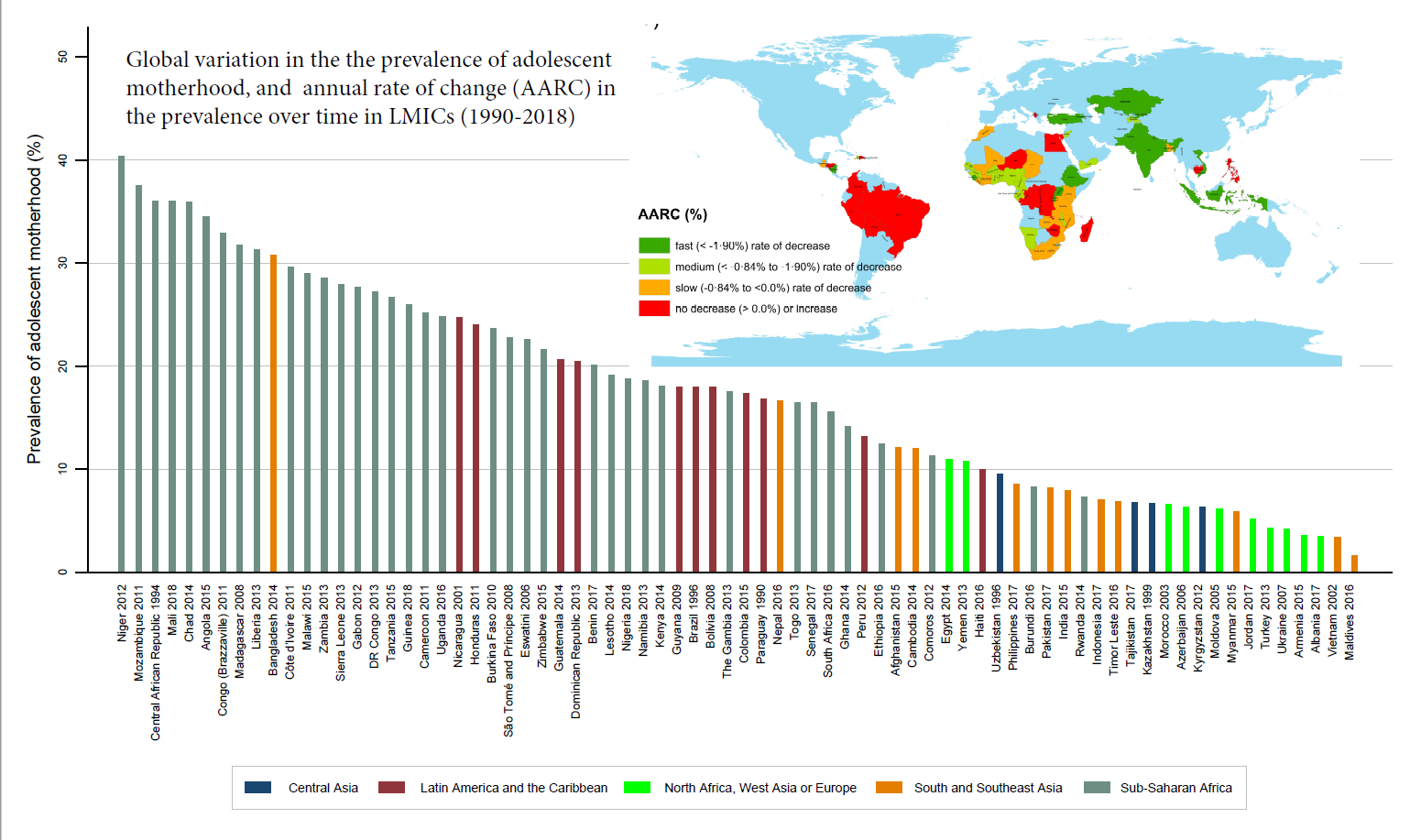High global prevalence of adolescent motherhood is proving hard to shift, with reductions modest or absent in many developing countries and even rising in some.
This is a key finding of a global study undertaken by researchers from The University of Queensland, Australia, in conjunction with the Department of Global Health and Population at the Harvard TH Chan School of Public Health in Boston. The researchers analysed Demographic and Health Survey data from more than 700,000 adolescent girls (aged 15-19 years) from 74 low-income and middle-income countries (LMICs) across 28 years (1990-2018). The results of this research suggest that young women in developing countries need more educational and health supports to reduce global burden of adolescent motherhood and meet targets set by United Nations Sustainable Development Goals.
Researcher M. Mamun Huda said the study demonstrates that socio-demographic disadvantage is a major driver of adolescent motherhood in poorer countries and requires greater public health policy attention and intervention. “Sociodemographic inequalities play a big part in adolescent motherhood and must be the focus of targeted interventions to accelerate progress towards the UN Sustainable Development Goals,” Mr Huda said. “Young women living in the most disadvantageous conditions, those who are poorest, have no education and live in rural locations, have the highest rates of adolescent motherhood. Not only do these groups have the highest prevalence of adolescent motherhood, but they also have elevated risk of maternal and child health outcomes as well as wider social and economic burdens on family, community and country.”
This study was a collaboration between Life Course Centre researchers at The University of Queensland’s Institute for Social Science Research – Mr Huda, Dr Martin O’Flaherty and Associate Professor Abdullah Mamun – and Dr Jocelyn Finlay of the Department of Global Health and Population at the Harvard TH Chan School of Public Health in Boston.
Adolescent health and well-being is a key target in the UN Sustainable Development Goals. The Goals include the aim of assisting adolescent girls with sexual and reproductive health to delay motherhood. According to World Health Organization (WHO) estimates, 21 million girls aged 15-19 in LMICs become pregnant every year and about 12 million give birth. Pregnancy and childbirth complications are a leading cause of death in adolescent girls in LMICs, and children of adolescent mothers are at increased risk of infant and child mortality. Adolescent mothers also have high levels of school dropout and lack of opportunities for decent work due to the ‘double burden’ of household duties and child rearing.
The new study shows the highest prevalence of adolescent motherhood was observed in Sub-Saharan Africa. Within this region, Niger had the highest rate at 40.40% of 15-19-year-old girls who reported to have been currently pregnant or have had a child. In South and South East Asia, Bangladesh had the highest prevalence of adolescent motherhood at 30.77%; and in Latin America and the Caribbean, Honduras had the highest observed rate at 24.00%. The Central Asia and North Africa/West Africa/Europe regions had relatively low prevalence of adolescent motherhood, with Egypt having the highest observed rate in that region of 10.94%.
Over time, change in the rate of adolescent motherhood is slow. In some high-burden countries such as Nigeria and India there has been a decline in the average annual change in adolescent motherhood over time, falling by -1.35% and -4.62% respectively. Other high-burden countries such as Bangladesh had little change with an annual average change of -0.60%. While other high-burden countries including Cambodia (+2.42%), Honduras (+1.88%), and the Philippines (+1.59%) had rising rates of adolescent motherhood over time. Disparities in the burden of adolescent motherhood persisted within countries across socio-demographic characteristics. A number of countries, including Senegal, Nigeria and Côte d’Ivoire, stand out as having particularly large inequalities over multiple socio-demographic characteristics.

Associate Professor Abdullah Mamun said the study provides a detailed understanding of how adolescent motherhood is experienced across time and place to inform better targeting of interventions. “There is high variation across regions and countries, with modest rate decreases in some, and stagnation and increases in others,” he said. Several countries with high observed prevalence and growth rate of adolescent motherhood suffer from widespread poverty, lack of economic opportunity and high rates of school dropout. In addition, they also have high rates of sexual violence, unmet need for contraception, and legal restrictions on emergency contraception and abortion.
Dr Jocelyn Finlay, Senior Research Scientist, Harvard TH Chan School of Public Health, said countries where adolescent motherhood are highly prevalent and rising need to urgently adopt stronger policies to support adolescent girls. She said this study provides valuable evidence on how to best target public health efforts to achieve this. “Socio-demographic inequalities in adolescent motherhood can be mitigated by targeting the most disadvantaged groups so that the UN Sustainable Development Goals’ motivation of ‘leave no-one behind’ can be achieved,” she said.
Implementation of effective strategic interventions, such as school-based sexual education and adolescent-friendly reproductive health services, can contribute to reducing adolescent motherhood in LMICs. National-level policies that promote economic growth, increase expenditure on education, decrease income inequality and improve gender equality also have a role to play in reducing adolescent motherhood.
‘Time trends and socio-demographic inequalities in adolescent motherhood in 74 low-income and middle-income countries: a population-based study’ is published in The Lancet Child & Adolescent Health.



